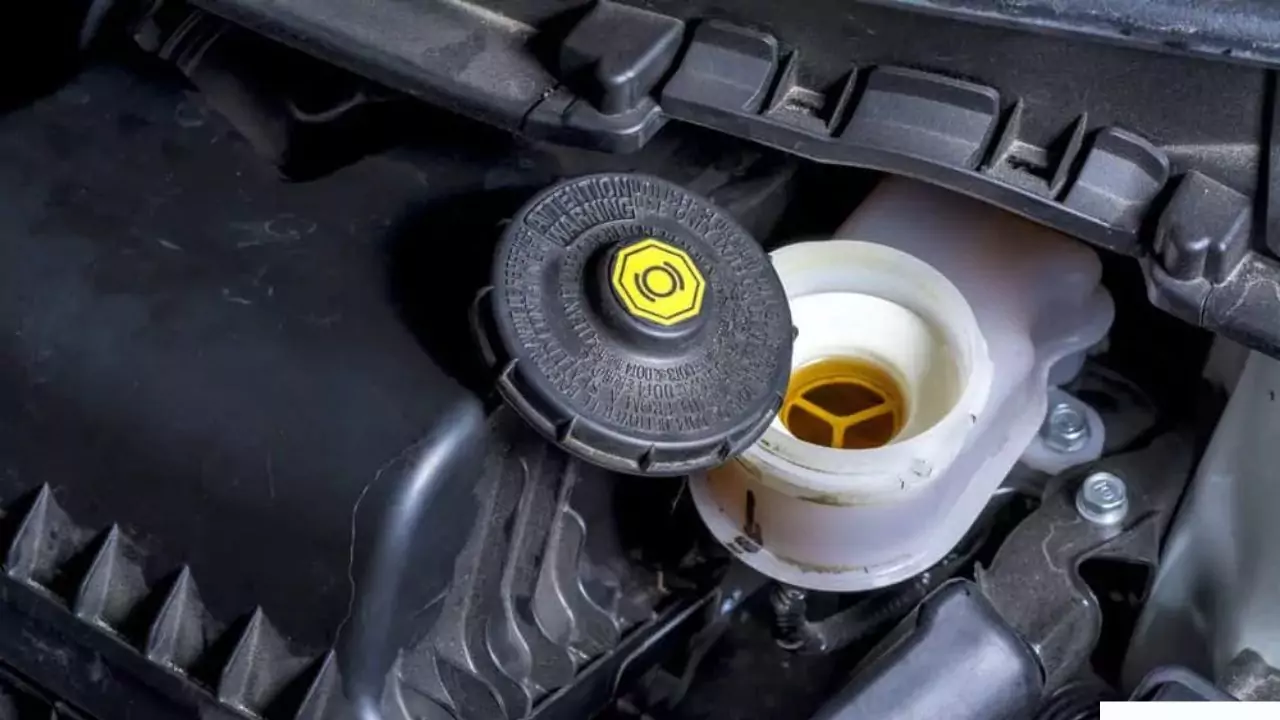Modern vehicles rely on various specialized fluids to function properly. Among them, power steering fluid and brake fluid serve critical roles in ensuring smooth steering and effective braking. While both are hydraulic fluids, they are designed for entirely different systems with unique compositions and properties.
Some car owners, when faced with a low brake fluid level, may wonder if they can use power steering fluid as a substitute.
Using the wrong fluid in a vehicle’s braking system can lead to serious damage, costly repairs, and safety hazards. Brakes are one of the most crucial safety components in any car, and the fluid used must meet precise specifications to maintain their performance.
This blog explores the differences between power steering fluid and brake fluid, the risks of using the wrong fluid, and the correct way to maintain your vehicle’s braking system.
Understanding Power Steering Fluid and Brake Fluid
Before discussing whether power steering fluid can be used as a substitute for brake fluid, it’s important to understand what each of these fluids does and how they differ.
What Is Power Steering Fluid?
Power steering fluid is a hydraulic fluid designed to assist in steering by reducing the effort needed to turn the wheel. It helps transfer power from the steering wheel to the steering mechanism, ensuring smooth and controlled movements.
Characteristics of Power Steering Fluid:
- Designed for hydraulic power steering systems.
- Helps lubricate and protect seals and components.
- Can be made from mineral oil, synthetic oil, or ATF (automatic transmission fluid).
- Operates at a lower temperature than brake fluid.
- Not designed to handle extreme heat or absorb moisture.
What Is Brake Fluid?
Brake fluid is a high-performance hydraulic fluid specifically formulated for the braking system. When you press the brake pedal, the fluid transfers that force to the brake calipers or wheel cylinders, slowing or stopping the car.
Characteristics of Brake Fluid:
- Designed for hydraulic brake systems.
- Operates under extreme heat and pressure.
- Must maintain viscosity in all temperature conditions.
- Has a high boiling point to prevent brake fade.
- Absorbs moisture over time (hygroscopic) to prevent system corrosion.
Why You Should Never Use Power Steering Fluid for Brake Fluid
1. Different Chemical Composition
Power steering fluid and brake fluid are formulated differently. Brake fluid is glycol-based (DOT 3, DOT 4, DOT 5.1) or silicone-based (DOT 5), while power steering fluid is typically petroleum-based or synthetic oil. These differences make them incompatible for use in each other’s systems.
2. Damage to Brake System Components
Brake fluid is specially designed to handle rubber seals, hoses, and metal parts inside the braking system. Power steering fluid, on the other hand, contains additives and detergents meant for steering components.
Using power steering fluid in the brake system can cause seals to deteriorate, leading to leaks and brake failure.
3. Risk of Brake System Failure
Brake fluid must maintain consistent pressure to operate effectively. Since power steering fluid is thicker and less heat-resistant, it can cause inconsistent braking, spongy brake pedals, and complete brake failure in extreme cases.
4. Moisture Absorption
Brake fluid is hygroscopic, meaning it absorbs water from the atmosphere. This property prevents moisture from accumulating in the brake system, which can lead to corrosion and brake fade.
Power steering fluid does not absorb moisture, which means that any water in the braking system will cause internal rusting and reduced braking efficiency.
5. High Operating Temperatures
Braking systems generate intense heat, especially under heavy use. Brake fluid is formulated with a high boiling point to withstand extreme temperatures without evaporating or losing effectiveness.
Power steering fluid, however, has a much lower boiling point, which can lead to fluid breakdown and brake failure.
6. Legal and Manufacturer Guidelines
Car manufacturers specify the correct fluid type for a reason. Using the wrong fluid voids warranties, can be dangerous, and may be illegal in certain regions. Automakers and repair professionals strongly advise against using anything other than the recommended brake fluid.
What to Do If You Accidentally Put Power Steering Fluid in the Brake System
If power steering fluid is mistakenly added to the brake reservoir, do not drive the vehicle. Here’s what you should do:
1. Do Not Start the Car
Starting the engine can circulate the contaminated fluid, making the situation worse.
2. Tow the Vehicle to a Mechanic
The entire braking system will need to be flushed immediately by a professional. This process involves removing the contaminated fluid, cleaning the system, and refilling it with the correct brake fluid.
3. Replace Damaged Components
If power steering fluid has been in the brake system for an extended period, rubber seals, hoses, and other components may be damaged and need replacement.
Proper Brake Fluid Maintenance
To ensure a properly functioning braking system, regular maintenance and fluid checks are essential. Here are a few tips:
1. Check Brake Fluid Levels Regularly
- Look at the brake fluid reservoir under the hood. It should be clear or light amber in color and within the indicated range.
- If the fluid is dark, it may need replacement.
2. Use Only the Manufacturer-Recommended Brake Fluid
- Check your owner’s manual to find the correct DOT type (DOT 3, DOT 4, DOT 5, or DOT 5.1) for your vehicle.
- Never mix different types of brake fluid unless specified by the manufacturer.
3. Flush and Replace Brake Fluid Periodically
- Brake fluid degrades over time due to moisture absorption.
- Most automakers recommend replacing brake fluid every 2-3 years or 30,000 miles.
4. Avoid Brake Fluid Contamination
- Never use brake fluid from an old, opened container, as it may have absorbed moisture.
- Keep the brake reservoir sealed and clean to prevent dirt from entering.
5. Address Brake System Issues Immediately
- If you notice spongy brakes, low fluid levels, leaks, or unusual braking behavior, have the system inspected by a professional.
Final Verdict: Can You Use Power Steering Fluid for Brake Fluid?
Absolutely not. Power steering fluid and brake fluid are designed for entirely different systems and have unique chemical compositions. Using power steering fluid in a braking system can cause serious damage, brake failure, and safety hazards.
Always use the correct brake fluid specified by your vehicle manufacturer and follow proper maintenance guidelines to ensure a safe and reliable braking system.
If you ever make the mistake of adding power steering fluid to the brake reservoir, do not drive the car—have it towed and flushed immediately to prevent costly repairs and safety risks.



